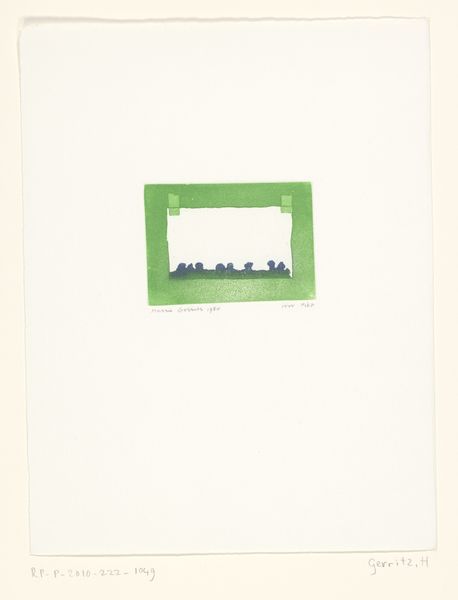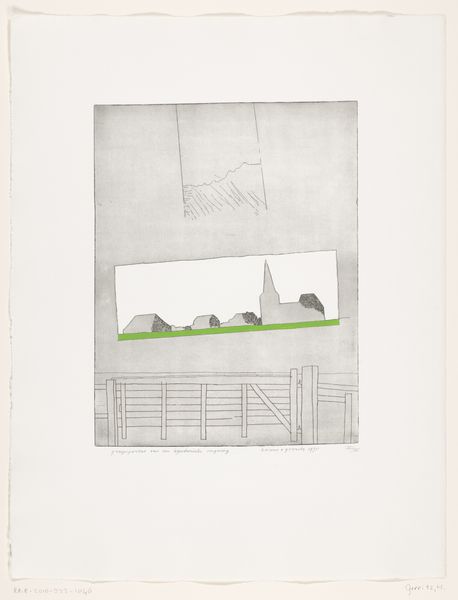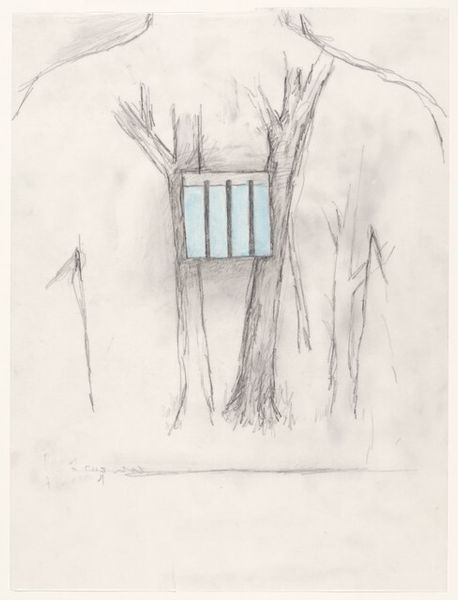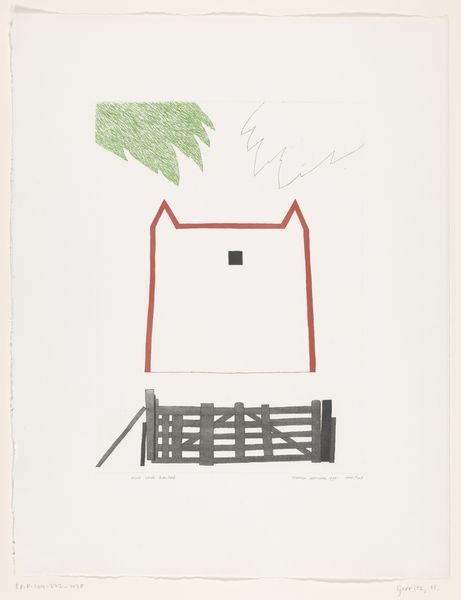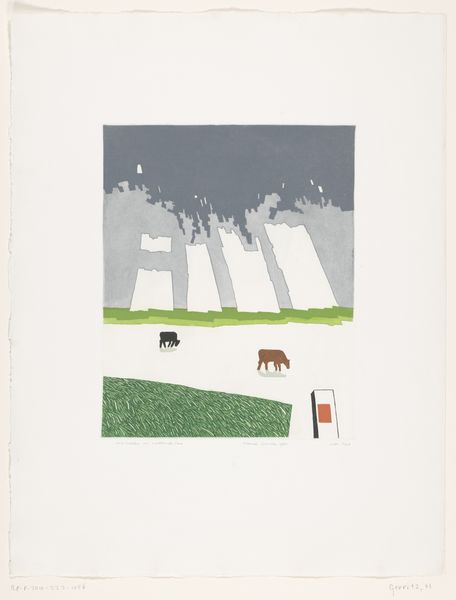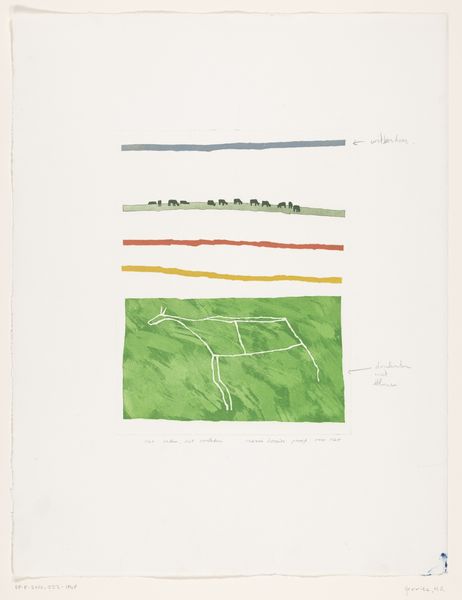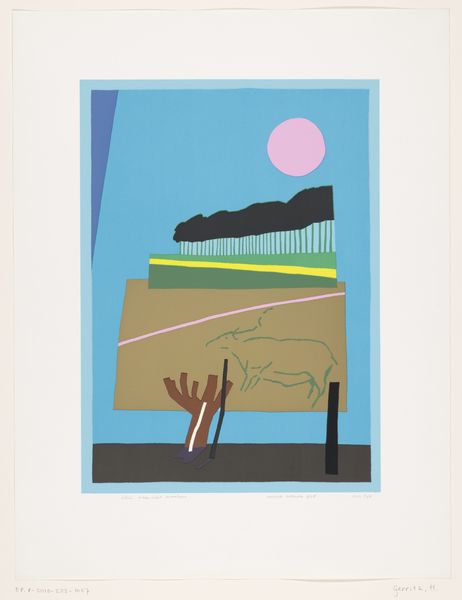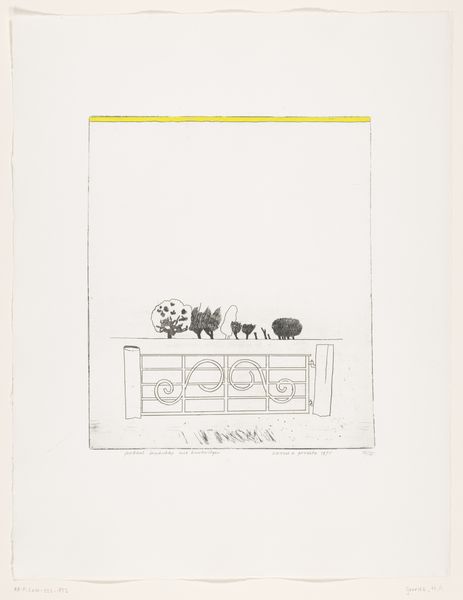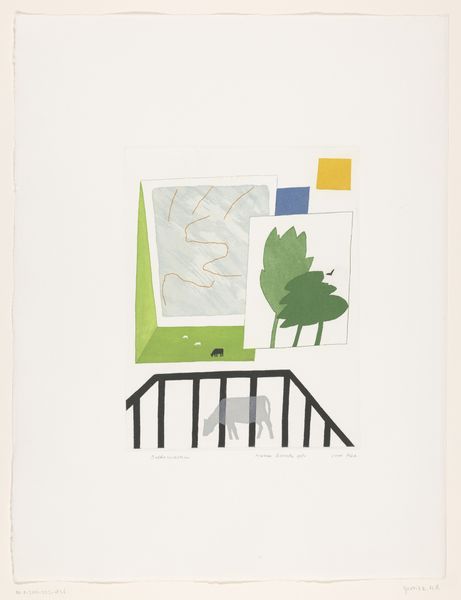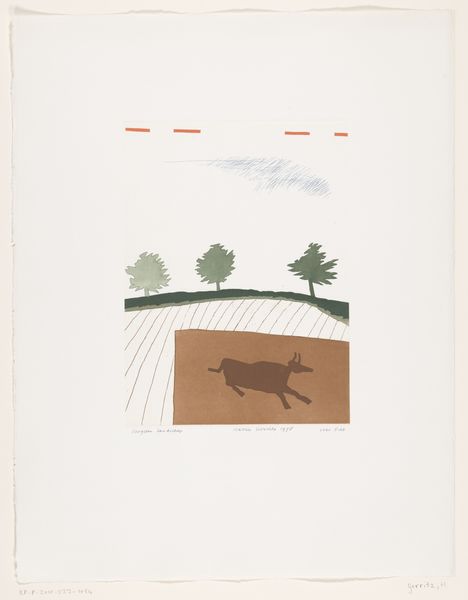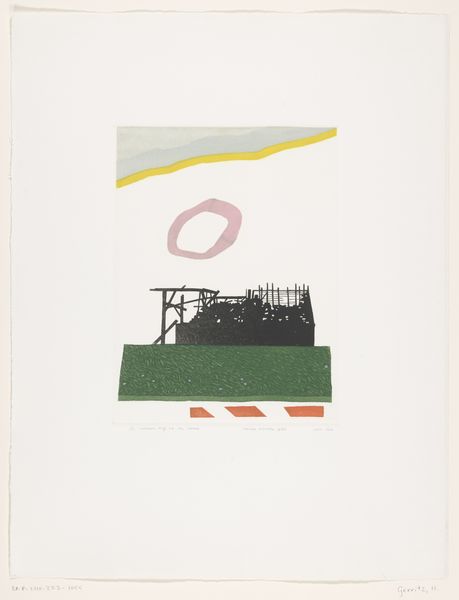
watercolor
#
landscape
#
watercolor
#
geometric
#
modernism
#
watercolor
Dimensions: height 655 mm, width 502 mm, height 341 mm, width 242 mm
Copyright: Rijks Museum: Open Domain
Curator: Here we have Harrie A. Gerritz’s “Een uur op een plek,” created in 1978. It's a watercolor piece currently residing here at the Rijksmuseum. Editor: My initial response is that the layering of the different elements—the pale sky, the shrubs, and that simple gate— evokes a dreamlike, almost unsettling placidity. The sparseness adds to that effect. Curator: That sense of unsettling quiet, I think, speaks to Gerritz’s broader project. This was a period of intense political and social change, particularly regarding land use and environmental concerns. A piece depicting nature but reduced to almost geometric form could be seen as a commentary on humanity’s increasing disconnect from, and control over, the natural world. Editor: Yes, look how Gerritz renders these common pastoral objects as fundamental shapes. That stark, slightly flattened presentation transforms a potentially sentimental landscape into a study of form, line, and space. It flattens our concept of "landscape". I see him playing with modernist ideas. Curator: I agree, and considering the Dutch landscape's fraught history – reclaimed from the sea and meticulously managed – the "hour in a place" may be less about nature itself and more about the complex human relationship to it. He hints at the boundaries we construct to tame our landscapes. Editor: True. The almost clinical depiction prevents the painting from descending into pure nostalgic reverie. He uses clean, unwavering lines to construct the forms, avoiding sentimentality in favor of careful visual analysis. The use of watercolor softens these crisp structural statements just enough, though. Curator: In that way, the medium and the message blend rather powerfully. Watercolor, being traditionally linked to fleeting impressions, almost creates another tension. This could symbolize the way that land and landscapes, once powerful representations of sustenance, tradition and legacy, are so easily molded, shifted and diluted in value. It captures a temporal state, suggesting constant mutability. Editor: A beautiful interpretation, tying those intrinsic aesthetic components to wider socio-political undertones. Seeing this as a commentary is extremely valuable to consider. Curator: Indeed, and recognizing that dynamic between formal structure and the artwork's broader societal narrative enriches our engagement with Gerrit's piece considerably. Editor: A powerful point to conclude with. A painting with what looks like simple forms creates an opportunity to dive into the way people relate with their ever changing, transforming lands.
Comments
No comments
Be the first to comment and join the conversation on the ultimate creative platform.
